Manila
| City of Manila Lungsod ng Maynila |
|||
 |
|||
|
|||
| Nickname(s): "Perla del Oriente (Pearl of the Orient) "Queen of the Orient"; "The City of Our Affections"; "City by the Bay"; "La Insigne y Siempre Leal Ciudad (Distinguished and Ever Loyal City)" | |||
| Motto: Linisin Ikarangal Maynila | |||
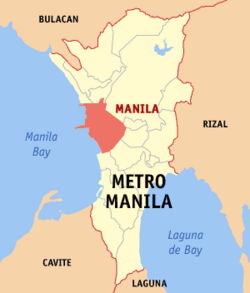 |
|||
| Coordinates: | |||
| Country | Philippines | ||
|---|---|---|---|
| Region | National Capital Region | ||
| Districts | 1st to 6th districts of Manila | ||
| Barangays | 897 | ||
| Incorporated (city) | June 10, 1574 | ||
| Government | |||
| - Mayor | Alfredo Lim (2007-2010; GO) | ||
| - Vice Mayor | Isko Moreno (2007-2010; (AM/PDP-Laban/GO) | ||
| Area | |||
| - City | 38.55 km² (14.9 sq mi) | ||
| Elevation | 16.0 m (52 ft) | ||
| Population (2007) | |||
| - City | 1,660,714 | ||
| - Density | 43,079/km² (26,774/sq mi) | ||
| - Metro | 11,553,427 | ||
| Time zone | PST (UTC+8) | ||
| ZIP code | 0900 to 1096 | ||
| Area code(s) | 2 | ||
| Website: www.manila.gov.ph/ | |||
The City of Manila (Filipino: Lungsod ng Maynila), or simply Manila, is the capital of the Philippines and one of the 17 cities and municipalities that make up Metro Manila. Located on the eastern shores of Manila Bay just west of the National Capital Region in western side of Luzon, it is one of the central hubs of a thriving metropolitan area home to over 14 million people.[1]
Manila, occupying a total land area of 38.3 square kilometers,[2] is the second most populous city in the Philippines, with more than 1.6 million inhabitants. Only nearby Quezon City, the country's former capital, is more populous. The metropolitan area is the second most populous in Southeast Asia.[1]
Manila lies about 950 kilometers southeast of Hong Kong, 2,400 kilometers northeast of Singapore and more than 2,100 kilometers northeast of Kuala Lumpur. The Pasig River bisects the city in the middle. Almost all of the city sits on top of centuries of prehistoric alluvial deposits built by the waters of the Pasig River and on some land reclaimed from Manila Bay. The layout of the city was haphazardly planned during Spanish Era as a set of communities surrounding the original Spanish Era walled city of Manila, called Intramuros. Intramuros is one of the oldest walled cities in the Far East. During the American Period, some semblance of city planning using the architectural designs and master plans by Daniel Burnham was done on the portions of the city south of the Pasig River.
Manila is bordered by several cities in Metro Manila such as Navotas and Caloocan City to the north, Quezon City to the northeast, San Juan and Mandaluyong City to the east, Makati City to the southeast, and Pasay City to the south.
Well into the 13th century, the city consisted of a fortified settlement and trading quarter at the bay of the Pasig River, on top of previous older towns. The official name of the city under its Malay aristocracy was Seludong/Selurung, which was the same name given for the general region of southwestern Luzon at that time, suggesting that it was the capital of Ancient Tondo. However, the city became known by the name given to it by its Tagalog inhabitants, Maynila, first recorded as Maynilad. The name is based on the nila, a flowering mangrove plant that grew on the marshy shores of the bay, used to produce soap for regional trade; it is either from the phrase may nila, Tagalog for "there is nila," or it has a prefix ma- indicating the place where something is prevalent (nila itself is probably from Sanskrit nila 'indigo tree').[3] (The idea that the plant name is actually "nilad" is a myth.)[4]
The original Manila was inside the fortified walls of Intramuros (meaning within the walls) which was constructed and designed by Spanish Jesuit missionaries to keep from invading Chinese pirates and natives uprising.
Manila became the seat of the colonial government of Spain when it officially controlled the Philippine Islands for over three centuries from 1565 to 1898. During the British occupation of the Philippines, the city was occupied by Great Britain for two years from 1762-1764 as part of the Seven Years War. The city remained the capital of the Philippines under the government of the provisional British governor, acting through the Archbishop of Manila and the Real Audiencia. Armed resistance to the British centred in Pampanga.
Manila also became famous during the Manila-Acapulco trade which lasted for three centuries and brought the goods as far as Mexico all the way to South East Asia. In 1899, the United States purchased the Philippines from Spain and colonized the whole Philippine archipelago until 1946. During World War II, much of the city was destroyed. It was the second most destroyed city in the world after Warsaw, Poland during World War II. The Metropolitan Manila region was enacted as an independent entity in 1975.
Manila has been classified as a "Gamma" global city by the Globalization and World Cities Study Group and Network.[5]
Contents |
History
- See also: Timeline of Philippine history
Pre-colonial era
When the Mongols invaded China, Zhang Shijie's fleet and the last Song emperor was believed to have escaped to pre-colonial Philippines and established the Luzon Empire or the Lesser Song Empire. It was also known as Gintu ("The Land of Gold") or Suarnabumi by its neighbors. The said empire flourished during the latter half of the Ming Dynasty when China closed its doors to foreign trade. Ancient Tondo has always been the traditional capital of the empire. Its rulers were equivalents to kings and not mere chieftains, and they were addressed as panginuan or panginoon ("lords"), anak banua ("son of heaven") or lakandula ("lord of the palace").
During the reign of Bolkiah (1485-1521) the Kingdom of Brunei decided to break the Luzon Empire's monopoly in the China trade by attacking Tondo and establishing the city state of Selurong (now Manila) as a Burneian satellite. A new dynasty under the Salalila was also established to challenge the House of Lakandula in Tondo.
In the mid-16th century, the areas of present-day Manila were sultanates and they were governed by Muslim rajahs. Rajah Sulayman and Rajah Matanda ruled the Muslim communities south of the Pasig River, and Rajah Lakandula ruled the Ancient Tondo, the community north of the river. These settlements held ties with the sultanates of Brunei, Sulu, and Ternate in Cavite.
Spanish rule

Governor-General Miguel López de Legazpi, searching for a suitable place to establish his capital after being compelled to move from Cebu to Panay by Portugese pirates, and hearing of the existence of a prosperous sultanate in Luzon, sent an expedition under Marshall Martin de Goiti and Captain Juan de Salcedo to discover its location and potentials. De Goiti anchored at Cavite, and tried to establish his authority peaceably by sending a message of friendship to Maynilad. Rajah Sulayman, then its ruler, was willing to accept the friendship that the Spaniards were offering, but did not want to submit to its sovereignty unto them and waged war against them.[6] As a result, De Goiti and his army attacked Maynilad on June 1570. After a stout fight, he captured the city before returning to Panay.
In 1571, the Spaniards returned, this time led by Legazpi himself along with his entire force (consisting of 280 Spaniards and 600 native allies). Seeing them approach, the natives set the city on fire and fled to ancient Tondo and neighboring towns. The Spaniards occupied the ruins of Maynilad and established a settlement there. On June 3, 1571, Legaspi gave the title city to the colony of Manila.[7] The title was certified on June 19, 1572.[7] Under Spain, Manila became the colonial entrepot in the Far East. The Manila-Acapulco Galleon trade route between the Philippines and Mexico flourished from 1571 until 1815.
Because of the Spanish presence in the area, the Chinese people, who were living in the area and engaging in free trade relations with the natives, were subjected to commercial restrictions as well as laws requiring them to pay tribute to Spanish authorities. As a result, the Chinese revolted against the Spaniards in 1574, when a force of 3,000 men and 62 Chinese warships under the command of Limahong attacked the city. The said attempt was fruitless, and the Chinese were defeated. In order to safeguard the city from similar uprisings later, the Spanish authorities confined the Chinese residents and merchants to a separate district called Parian de Alcaceria.
On June 19, 1591, after the commencing the construction of the fort there, Legazpi made overtures of friendship of Rajah Lakandula of Tondo, which was prudently accepted. However, Rajah Sulayman refused to submit to the Spaniards and gathered together a force composed of Tagalog warriors after failing to get the support of Lakandula and that of the chieftains of Hagonoy and Macabebe. On June 03, 1571[8], Sulayman led his troops and attacked the Spaniards in a decisive battle at the town of Bangkusay, but they were defeated, and Sulayman himself was killed. With the destruction of Sulayman's army and the friendship with Rajah Lakandula, the Spaniards were enabled to establish throughout the city and its neighboring towns. Rajah Matanda consented to give the Spaniards a land for their settlement and moved out of Maynilad. Because of Matanda's recognition of the Spanish authority, he was proclaimed as the first Christian. Through his efforts, many of his relatives were converted to Christianity. When Matanda died in 1572, Legazpi and other high officials carried his remains and placed it in front of the main altar of the Manila Cathedral, a place of the highest honor. This act overwhelmed the other native chieftains like Lakandula who was baptized as Don Carlos Lacadola to accept the Spanish sovereignty. According to historian John Foreman, "Lakandula appears to have been regarded more as a servant by the Spaniards, rather than a free ally." To ensure their loyalty the Spaniards they were given privileges and titles. Eventually, the Augustinians came to spread the Roman Catholic faith through the establishment of schools and parishes. They were soon followed by the Franciscans, Jesuits, Dominicans, Augustinians and other religious orders who came later in the centuries.
In 1595, Manila was decreed to be the capital of the Philippines, although it had already in fact served that function practically from its founding in 1571. Legazpi then ordered the creation of a municipal government or cabildo with a set of Spanish-style houses, monasteries, nunneries, churches, and schools giving birth to Intramuros.
At various times in the following century, the Chinese rose in revolt against the Spaniards. In 1602, they set fire to Quiapo and Tondo, and for a time threatened to capture Intramuros. In 1662, they again revolted, while in 1686, a conspiracy led by Tingco plotted to kill all the Spaniards. These events led to the expulsion of the Chinese from Manila and the entire country by virtue of the decrees that were made by the Spanish authorities to that effect. However, later reconciliations nearly always permitted the continuation of the Chinese community in the city.
British occupation
There was a brief British occupation of Manila from 1762-1764 as a result of the Seven Years' War, which was fought between France and Britain. Spain became a British enemy when it sided with France due to ties between their royal families. The fleeing Spaniards destroyed many of the records, and in the sack of the town by the British, many historical documents of great value were destroyed or stolen from the archives.
In reality the British only controlled Manila and Cavite. But Manila was the capital, and key, to the Spanish Philippines, and the British accepted the written surrender of the Spanish government in the Philippines from Archbishop Rojo and the Real Audiencia on 30 October 1762.[9]
The terms of surrender proposed by the Real Audencia and agreed to by the British leaders, secured private property, guaranteed the Roman Catholic religion and its episcopal government, and granted the citizens of the former Spanish colony the rights of peaceful travel and of trade 'as British subjects'. Under the direction of the provisional British governor, the Philippines continued to be governed by the Real Audencia, the expenses of which were agreed to be paid for by Spain.[9]
The only armed resistance to the British was in Pampanga where Oidor Don Simón de Anda y Salazar established his headquarters first in Bulacan, then in Bacolor. [10],
The terms of surrender signed by Archbishop Rojo and the Real Audencia, and sealed with the Spanish Royal Seal, ceded the entire archipelago to Great Britain.[11]
An unknown number of Indian soldiers known as Sepoys, who came with the British, deserted and settled in Cainta, Rizal, which explains the uniquely Indian features of generations of Cainta residents.[12]
Katipunan years
Being the traditional seat of education and liberal thinking in the Philippines, Manila was a rich field for anti-Spanish propaganda. The seeds of revolution germinated in 1886 with the publication of Dr. Jose Rizal's book Noli Me Tangere (Touch Me Not), a novel critical of the way the Spanish friars were governing the Philippines. The Spanish government condemned the book, and Rizal was exiled to Dapitan. In 1892, he returned to Manila to found La Liga Filipina, a nationalistic organization. Later that year, in Tondo, Andres Bonifacio founded the Katipunan, a secret organization devoted to the overthrow of Spanish rule in the country.
Although initial skirmishes between the Filipinos and Spaniards were brief and nearly always lost by the Filipinos, the movement grew until open rebellion broke out in August 1896 when the Spaniards discovered the Katipunan. With the unmasking of the Katipunan, Bonifacio called the Tejeros Convention, at which the revolutionary Tejeros government was formed, with General Emilio Aguinaldo at its head. The Tejeros government was unsuccessful in its fight for freedom from Spain, and as part of the Pact of Biak-na-Bato peace treaty, General Aguinaldo accepted exile in Hong Kong. Dr. Rizal became a martyr of the revolution when the Spaniards executed him by firing squad on December 30, 1896.
American period

U.S. Troops invaded Manila in 1898 and waged war with the Spaniards and Filipinos in the Spanish-American War and the Philippine-American War. Following the defeat of Spain, U.S. forces took control of the city and the islands in one of the most brutal and forgotten chapters of Philippine American history.
The American Navy, under Admiral George Dewey, defeated the Spanish squadron in the Battle of Manila Bay on May 1st, 1898. Admiral Dewey testified that after the battle the Spanish Governor wished to surrender to the Americans rather than the Filipinos, whom he feared.[13]
Having just won their independence from Spain, the Filipinos were fiercely opposed to once again being occupied. Emilio Aguinaldo proclaimed the First Philippine Republic at the Malolos Congress and had begun to build the foundations for an independent nation. Admiral Dewey, however, claimed he never recognized the Philippine Republic, as he did not have the authority to do so and did not consider it an organized government.[14] War broke out between the Filipinos and the Americans on February 4, 1899, when an American soldier shot and killed a Filipino in Manila. The Americans pursued the retreating Filipino forces province by province, until General Emilio Aguinaldo (then president of the Republic) surrendered in Palanan, Isabela, on March 23, 1901.
American high command at that time was headed by General Otis who ordered invasion and occupation. By that time the Filipino troops had taken classic defensive positions around Manila to attempt to keep them out. However, the poorly armed, ill-trained soldiers could not compete with the superior firepower of the Americans and they lost and were severely beaten; so much so that it has been reported that the dead were used as breastworks.
Under the command of Aguinaldo the Filipinos began a guerrilla campaign to resist the new occupiers. This campaign had limited success in the early days following the initial occupation of the Americans although any successes were short-lived. The replacement of General Otis by General Arthur MacArthur, Jr. began an extensive campaign to suppress the local population.
This campaign by the USA has been reported as being a particularly bloody suppression with wild reports of commanders ordering the murder of everyone over 10 years old. Several books have been written on this war and it's implications for both the local peoples and the US. These books are largely hostile to the US: [15]
In the Treaty of Paris in 1898, Spain handed over the Philippines to the United States of America for US$ 20,000,000 and ending 333 years of Spanish rule in the islands. [16][17]
Manila continued under an American military government until civil government was established for the city on July 31, 1901. The Philippine-American War continued through 1903 at the cost of many lives both in Manila and elsewhere in the Islands. In 1935, the United States government committed itself to granting the Philippines Independence after a ten-year transition, a period that was extended by one year due to World War II.
Japanese invasion
American combat units were ordered to withdraw from the city and all military installations removed on December 30, 1941. Manila was declared an open city by President Manuel L. Quezon, to spare the city from death and destruction. Quezon issued a decree enlarging the safe zone to include outlying areas of Manila as safe zones, establishing the new administrative jurisdiction, Greater Manila.
The post of mayor of Greater Manila was given to Quezon's former Executive Secretary, Jorge B. Vargas. On the evening of New Year's Day of 1942, a Japanese courier delivered notice to Vargas that Japanese forces already bivouacked at Parañaque would enter Greater Manila the following day. From 9 am to 10 am of January 2, Japanese imperial forces marched into the City of Manila.
Vargas was tasked to hand over to the new authorities Greater Manila and present the remaining Filipino leaders to Japanese authorities. Vargas and the Filipino leaders present were asked to choose three options; (1) a purely Japanese military administration, (2) a dictatorial government run by a Filipino under General Artemio Ricarte who went on self-exile to Japan after the Filipino-American war, or (3) a government by commission selected by Filipinos. Vargas and the local leaders chose the third option and established the Philippine Executive Commission to manage initially Greater Manila, and was later expanded to cover the whole of the Philippines.
Vargas assumed the chairmanship of the Philippine Executive Commission and appointed to the post of Mayor of Greater Manila in 1942, Leon G. Guinto Sr., a Secretary of Labor under the Philippine Commonwealth administration of President Manuel L. Quezon. Guinto held the position of Mayor of Greater Manila until the liberation of the city.
On October 20, 1944 American General Douglas MacArthur fulfilled a promise to return to the Philippines (see Battle of Leyte). From February 3 to March 3 1945, after the climactic battle at Intramuros ended, the thoroughly devastated city of Manila was officially liberated by joint Filipino and American troops against the Japanese. Allied Filipino & American troops did not reach the city in time to prevent the Manila Massacre though. Soon, Greater Manila was dissolved, and its towns returned to their pre-war status. On July 4, 1946, the Philippine flag was raised for the first time in Rizal Park.
Martial Law years
Between 1972 and 1981, Manila and the rest of the country was placed under martial law by President Marcos. During that period, the local economy continued disintegration amid charges of overwhelming corruption by Marcos and his associates.[8] On August 21, 1983, opposition leader Benigno Aquino flew to Manila from the United States and was assassinated as he left the airplane in Manila. Increasingly, the population opposed Marcos' rule. After the People Power Revolution, Aquino's widow, Corazon, was installed as president in 1986. During the Aquino presidency, Manila witnessed six unsuccessful coup attempts, the most serious occurring in December 1989.[18]
Geographical History
- Further information: Luzon Empire
- Further information: Ancient Tondo
Before and during the Spanish colonization of the Philippines, Manila was the provincial capital over a province whose territory at one time covered nearly all of Luzon, and included the modern territorial subdivisions of Pampanga, Bulacan, Rizal, Laguna, Batangas, Quezon, Mindoro, Masbate and Marinduque. Later, these subdivisions were themselves made provinces, leaving Manila province with a territory roughly equal to the present City of Manila proper (except Intramuros, the capital site), and the northwestern two-thirds of Rizal province. The boundary of Manila province went from northeast to southwest, including Antipolo, Cainta, Taytay and Taguig, and all of the towns north and west of them, in Manila province; and Angono, Teresa, Morong, and the towns south and east of them, in Laguna province. Early in the province's history, the provincial name was changed from Manila to Tondo Province, by which it was known for most of the Spanish era.
In about 1853, four pueblos or towns of Tondo Province were joined with the northeastern towns of Laguna province to form the politico-military Distrito de los Montes de San Mateo, or District of the San Mateo Mountains. The Tondo Province annexed to this new district the towns of Cainta, Taytay, Antipolo and Boso-boso, while Laguna contributed the towns of Angono, Binangonan, Cardona, Morong, Baras, Tanay, Pililla and Jalajala. But the name of the new district proved unwieldy, too long, and misled many into thinking the town of San Mateo (in Tondo province) was the capital of the San Mateo Mountain District, when in reality the district capital was in Morong. So, in 1859, following common practice of the day, the district was renamed after its capital; namely, Morong District. At about the same time, Tondo Province was renamed Manila Province.
When the Spaniards turned over the Philippines to the hands of the Americans, a civil government was formed. In about the same period, the Manila Province was dissolved by the Philippine Commission, and its pueblos were incorporated with those of the District of Morong, forming the new Province of Rizal. A few weeks, a new charter for the City of Manila, defining its boundaries and annexing some of towns of the Province of Rizal to its districts. These boundaries were slightly revised and redefined on January 29, 1902 when the suburb of Gagalangin was annexed to the city district of Tondo, and the former pueblo of Santa Ana was turned into a city district of Manila. On July 30 of the same year, the city board officially divided the city into 13 political subdivisions named as districts, and the boundaries of each were defined. On August 15 of the same year, the pueblo of Pandacan was annexed as a city district. Since then the boundaries and city districts of Manila have remained essentially the same.
During World War II, the City of Manila was declared an open city and its administrative boundaries expanded to outlying cities and municipalities. It was called the Greater Manila and included districts such as Bagumbayan means New Town (South of Manila), Bagumpanahon means "New Era" (Sampaloc, Quiapo, San Miguel and Santa Cruz), Bagumbuhay means "New Life" (Tondo), Bagong Diwa means "New Order" (Binondo & San Nicholas), the then newly established Quezon City was collapsed and divided into two districts, while the municipalities of Caloocan, Las Piñas, Malabon, Makati, Mandaluyong, Navotas, Parañaque, Pasay, and San Juan became districts of Manila.
In 1948, Quezon City was declared the national capital of the new Republic of the Philippines. But on May 29, 1976, President Ferdinant E. Marcos returned the national capital to Manila by virtue of the Presidential Decree No. 940, declaring that "the area prescribed as Metro Manila by Presidential Decree 824 was to be the seat of the national government.
Government

Like all cities of the Philippines, Manila is governed by a mayor who heads the executive department of the city. The current mayor for the 2007-2010 term is Alfredo Lim, who is making a comeback to the city hall following a 3-year stint as a Senator. The city mayor is restricted for three consecutive terms (nine years), although he can be elected again after an interruption of one term.
Isko Moreno the city's incumbent vice-mayor heads the legislative arm which is composed of the elected city councilors, six from each of the city's six congressional districts.
The city is divided into 897 barangays, which are the smallest unit of local government in the Philippines. Each barangay has its own chairperson and councilors. For administrative convenience, all the barangays in Manila are grouped into 100 zones and which are further grouped into 16 administrative districts. These zones and districts have no form of local government.
The city further has six representatives popularly elected to the House of Representatives, the lower legislative branch of the Philippines. Each representative represents one of the six Congressional districts of Manila.
City seal
The City Seal depicts the words Lungsod ng Maynila and Pilipinas, Filipino for City of Manila and Philippines, in a circle around a shield. The circle also contains six yellow stars representing the city's six congressional districts. The shield, in the shape of pre-colonial people's shield, depicts the city's nickname Pearl of the Orient on top; a sea lion in the middle, in reference to the city's Spanish influences; and the waves of the Pasig River and Manila Bay in the bottom portion. The colors of the seal mirror that of the Flag of the Philippines.
Geographical districts

The city is divided into sixteen (16) geographical districts. Only one district was not an original town - Port Area. Eight (8) districts are located north of the Pasig River and eight (8) are in the south. San Andres Bukid was previously part of Santa Ana, while Santa Mesa was once a part of Sampaloc. These districts should not be confused with the six congressional districts of Manila.
| Geographical district | Barangays | Population (2007 census) |
Area (has.) |
Pop. density (per km²) |
|---|---|---|---|---|
| Binondo | 10 | 12,100 | 66.11 | 18,304.1 |
| Ermita | 13 | 6,205 | 158.91 | 3,904.8 |
| Intramuros | 5 | 5,015 | 67.26 | 7,455.7 |
| Malate | 57 | 78,132 | 259.58 | 30,099.8 |
| Paco | 43 | 69,300 | 278.69 | 24,866.7 |
| Pandacan | 38 | 76,134 | 166.00 | 45,862.9 |
| Port Area | 5 | 48,684 | 315.28 | 15,441.4 |
| Quiapo | 16 | 23,138 | 84.69 | 27,322.0 |
| Sampaloc | 192 | 255,613 | 513.71 | 49,758.5 |
| San Andres | 65 | 116,585 | 168.02 | 69,386.2 |
| San Miguel | 12 | 16,115 | 91.37 | 17,636.9 |
| San Nicolas | 15 | 43,225 | 163.85 | 26,380.5 |
| Santa Ana | 34 | 62,184 | 169.42 | 36,703.5 |
| Santa Cruz | 82 | 118,779 | 309.01 | 38,438.1 |
| Santa Mesa | 51 | 98,901 | 261.01 | 37,892.2 |
| Tondo | 259 | 630,604 | 865.13 | 72,891.6 |
All of these districts, with the exception of Port Area, have their own churches, and several of these districts have achieved recognition in their own right. Intramuros being the old and original enclave of Manila is a historical site. The district of Binondo is the city's Chinatown. Tondo is the densest in terms of population, the largest in land area and also with the highest poverty level. The districts of Ermita and Malate are well-known and popular with tourists, having many bars, restaurants, five-star hotels, and shopping malls while the districts of San Miguel and Pandacan hosts the official residence of the President of the country, Malacañan Palace.
National government offices

The City of Manila is the capital of the Philippines and is also the seat of political power in the country. During the early years of the American colonial government, they envisioned a well designed city outside the walls of Intramuros. In nearby "Bagumbayan" or what is now Rizal Park, was chosen to become the center of government and a design commission was given to Daniel Burnham to create a master plan for the city patterned after Washington D.C. The plan was abandoned and construction was halted due to World War II.
Eventually, under the Commonwealth Government of Manuel L. Quezon, a new government center was to be built on the hills northeast of Manila, or what is now Quezon City. Several government agencies have set-up base in Quezon City but several key government offices are in Manila such as, the Office of the President, the Supreme Court, the Court of Appeals, the Bangko Sentral ng Pilipinas, the Departments of Budget, Finance, Health, Justice, Labor & Employment, and Tourism.
Parks and open areas

Directly south of Intramuros lies Rizal Park, the country's most significant park. Also known as Luneta (Spanish term for "crescent-shaped") and previously as Bagumbayan ("New Town"), the 60 hectare Rizal Park sits on the site where José Rizal, the country's national hero, was executed by the Spaniards on charges of subversion. A monument stands in his honor. The big flagpole west of the Rizal Monument is the Kilometer Zero for road distances on the island of Luzon and the rest of the country.
Other attractions in Rizal Park include the Chinese and Japanese Gardens, the Department of Tourism building, the National Museum of the Philippines, The National Library of the Philippines, the Planetarium, the Orchidarium and Butterfly Pavilion, an open-air auditorium for cultural performances, a relief map of the Philippines, a fountain area, a children's lagoon, a chess plaza, a light and sound presentation, and the Quirino Grandstand.
Another famous open space in Manila is the Baywalk. This promenade lies in front of the Manila Bay where one can experience one of the most breathtaking sunsets of the world. Coconut trees, giant kaleidoscopic lamp posts and other scenery dot this two-kilometer stretch of ample space beside Roxas Boulevard. The Baywalk used to include al fresco cafés and restaurants, and stages with live musical acts but these were removed in late 2007 by Mayor Alfredo Lim.[19]
Aside from Rizal Park, Manila has very few other open public spaces. Rajah Sulayman Park, Manila Boardwalk, Liwasang Bonifacio, Plaza Miranda, Mehan Garden, Paco Park, Remedios Circle, Manila Zoological and Botanical Garden, Plaza Balagtas and the Malacañang Garden are some of the other parks in the city. In 2005, Mayor Lito Atienza opened the Pandacan Linear Park, a strip of land that served as a buffer zone between the oil depot and the residential-commercial properties in Pandacan and could be found along the banks of the Pasig River. In the northern most part of the city lies the three cemeteries of Loyola, Chinese, and Manila North Green Park, the largest public cemetery in Metropolitan Manila. A newly opened and functioned Manila Ocean Park features a wide variety of marine animals.
Economy

Manila's economy is diverse and multifaceted. With its excellent protected harbor, Manila serves as the nation's chief seaport. In addition, it is the financial and publishing center for the Philippines.[18]
Diverse manufactures include chemicals, textiles, clothing, and electronic goods. Watches, iron and steel, leather goods, and shoes are also manufactured within the city. Food and beverages and tobacco products also employ many residents. Additionally, local entrepreneurs continue to process primary commodities for export, including rope, plywood, refined sugar, copra, and coconut oil.[18]
Tourism is also a thriving industry. Being one of the major tourist destinations in the country, the city attracts over 1 million visitors[18] from all over the world annually. Many of Manila's tourist sites are found in the Binondo, Intramuros and Malate.
Every district in the city with the exception of Port Area has its own public market, locally called the pamilihang bayan or palengke. Public markets are often divided into two, the dry goods section and the wet goods section.[20] Commerce in these public markets is lively, especially in the early morning. Under the urban renewal program of the incumbent administration, some of the public markets had been refurbished and given a fresher look, like the Santa Ana Public Market and the Pritil Public Market. Cheap buys or goods being sold at rock-bottom prices are available in the flea markets of Divisoria and Quiapo, where bargaining is a major shopping experience.
Modern shopping malls dot the city especially in the areas of Malate and Ermita. SM City Manila, part of the country's largest chain of malls, stands behind the Manila City Hall, while the original SM Department store still operates in Carriedo in Santa Cruz. One of the popular malls that lies at the heart of Manila is Robinson's Place Ermita. In the southern part of the city in Malate district is Harrison Plaza, one of the city's oldest shopping malls.
Demographics
Population density
With a population of 1,660,714 and a land area of 38.55 km², Manila has the highest population density of any major city in the world with 43,079 people/km² (with district 6 being the most dense with 68,266, followed by the first two districts (Tondo) with 64,936 and 64,710, respectively, and district 5 being the least dense with 19,235).
Manila's population density dwarfs that of Paris (20,164 inhabitants per km²), Shanghai (16,364 people/km², with its most dense district of Nanshi's 56,785 density), Buenos Aires (2,179 people/km², with its most dense inner suburb Lanus' 10,444 density), Tokyo (10,087 people/km²), Mexico City (11,700 people/km²), and Istanbul (1,878 people/km², with its most dense district Fatih's 48,173 density).
But when accounting for the entire urban area, Metro Manila drops to 85th place with 12,550 people/km² in a land area of 1,334km², behind even Cebu City, which ranks 80th.[21]
Languages
The vernacular language is Filipino in the form of Tagalog, while English is the language most widely used in education and business throughout the Metro Manila region. Hokkien Chinese is spoken by the city's large Chinese-Filipino community. A number of older residents can still speak basic Spanish, which was a mandatory subject in the curriculum of Philippine universities and colleges until 1987, and many children of European, Indian or other migrants or expatriates also speak their parents' languages at home, aside from English or Filipino for everyday use.
Religion
The cosmopolitan atmosphere and cultural diversity of Manila is reflected in the number of places of worship scattered around the city. The freedom of worship in the Philippines, which has existed since the creation of the republic, allowed the diverse population to build their sacred sites without the fear of persecution. People of different denominations are represented here with the presence of Christian churches, Buddhist temples, Jewish synagogues, and Islamic mosques.
Roman Catholicism

Manila is the seat of the Archdiocese of Manila, the oldest archdiocese in the country, and the Primate of the Philippines.[2] The archdiocese's offices is located in the Manila Cathedral (Basilica Minore de la Nuestra Señora de la Immaculada Concepcion) inside the Intramuros. The city is under the Patronage of San Andres (St. Andrew).
Being the seat of the Spanish colonial government in past centuries, it has been used as the base of numerous Roman Catholic missions to the Philippines. Among the religious orders that have gone to the Philippines include the Dominicans, the Jesuits, the Franciscans, the Augustinians (which includes the Augustinian Recollects), the Benedictines, the Sisters of St. Paul of Chartres, the Vincentian Fathers, the Congregatio of the Immaculati Cordis Mariae, and the De La Salle Christian Brothers.

Other notable churches and cathedrals in the city include San Agustin Church in Intramuros, the shrine of the canonically crowned image of Nuestra Señora de Consolación y Correa, a UNESCO World Heritage Site[2], and a favorite wedding place of notable people and one of two fully air-conditioned churches in the city; Quiapo Church, also known as the Basilica Minore del Nuestro Padre Jesus Nazareno, site of the annual January Black Nazarene procession; Binondo Church, also known as Basilica Minore de San Lorenzo Ruiz; Malate Church, the shrine of Nuestra Señora de Remedios; Ermita Church, home of the oldest Marian Image in the Philippines, Nuestra Señora de Guia; Tondo Church, home of the century-old ivory image of Sto. Niño (Child Jesus); Sta. Ana Church, shrine of the canonically crowned image of Nuestra Senora de los Desamparados; and San Sebastian Church or the Basilica Minore de San Sebastian, the only all-steel church in Gothic style in Asia.
Protestant churches

Manila is home to some of the older and larger Protestant churches in the Philippines. While most of the older churches established by American missionaries are located within the Manila city limits, a greater number of the larger churches are in the suburbs and satellite cities.
After the Second World War, a great influx of foreign Protestant missionaries came to the islands among which are the Baptists, Nazarenes, Pentecostals, Christian and Missionary Alliance established churches and schools throughout the islands making Manila their headquarters of operations. The Baptist Bible Church in Santa Mesa, Manila is the first church founded under the auspices of the Baptist Bible Fellowship in 1947. Since its founding, the Springfield, Missouri-based Baptist Bible Missions have established 2000 churches in the Philippines.
Islam, Buddhism and other faiths
There are many Buddhist and Taoist temples built by the Chinese community in Manila. The Quiapo district is home to a sizable Muslim population in Manila, and The Golden Mosque is located there. In Ermita, there is a large Hindu temple for the Indian population, while on U.N. Avenue, there is a Sikh Temple. There is also a temple of The Church of Jesus Christ of Latter-day Saints. In Malate, along Quirino Avenue, there once was a synagogue for the small Jewish community in the Philippines; a new synagogue has since been erected in neighboring Makati, along Tordesillas Street. The Philippine-based Iglesia ni Cristo and the Philippine Independent Church (Aglipayan) also has numerous chapels and churches spread throughout the city.
Education
Manila is home to majority of the colleges and universities in Metro Manila. The University Belt or U-Belt, informally located in the districts of Malate, Ermita, Intramuros, San Miquel, Quiapo, and Sampaloc is the colloquial term for the high concentration of institutions of higher education that are located in these districts. Among them are the state university University of the Philippines, Manila, which houses the Philippine General Hospital, Polytechnic University of the Philippines, Manila located in Sta. Mesa, private school Adamson University in Ermita, private school Philippine Women's University, Taft Ave., private school De La Salle University-Manila and De La Salle-College of Saint Benilde, private schools San Beda College, University of Santo Tomas in Sampaloc, Philippine Christian University on Taft Ave., St. Paul University, Manila Central University, University of the East, Far Eastern University, Centro Escolar University, Philippine Normal University and the city-owned Pamantasan ng Lungsod ng Maynila at Intramuros.
The city also plays host to Manila Science High School, the National Museum of the Philippines, where the Spoliarium of Juan Luna is housed, the Metropolitan Museum, the Museong Pambata (Children's Museum), as well as the National Library, located within Rizal Park.
Transportation
Air
Ninoy Aquino International Airport (NAIA), eight kilometers south of the city center, serves Manila, Metro Manila and nearby provinces. A second terminal, Terminal 2 (or the Centennial Terminal) opened in October 1999. The International flag-carrier Philippine Airlines uses this terminal exclusively for both its domestic and international service while all other international flights use the original NAIA terminal. The construction of a third terminal (NAIA-3) opened in August 2008. It currently houses the domestic flights of Cebu Pacific, Air Asia and PAL Express and is set to operate international flights within the year. The main carrier serving NAIA is Philippine Airlines.
Another alternative point of embarkation and disembarkation is Diosdado Macapagal International Airport in the Clark Special Economic Zone. Some airlines use this small airport because of its cheaper landing and parking fees.
Roads
The main roads of Metro Manila are organized around a set of radial and circumferential roads that radiate and circle in and around Manila proper. Roxas Boulevard, easily the most well-known of Manila's streets, line the southern shores of Manila with Manila Bay. The boulevard is part of the Radial Road 1 that leads south to the province of Cavite. Another well-known radial road is España Boulevard (part of Radial Road 7) that starts in Quiapo and ends at the Welcome Rotunda along the border with Quezon City. Pres. Sergio Osmeña Sr. Highway, part of the South Luzon Expressway or Radial Road 3 is the most important highway linking Manila with the provinces of southern Luzon.
The most common types of public transportation are buses and the jeepney. Tricycles and Pedicabs are used for short distances. In some areas, especially in Divisoria, two stroke motors are fitted in the pedicabs and are used for goods transport.
Bridges

There are eight major bridge spans in Manila, more than half of the number of bridges that connects the north and south banks of the Pasig River in Metro Manila. There are two rail bridges that crosses the river, the Light Rail Transit 1 and the Philippine National Railways track. The bridges listed below are in a west to east order, with the first bridge Del Pan, nearest to the mouth of the Pasig River into Manila Bay.
- Roxas bridge - formerly called Del Pan (San Nicolas to Port Area)
- Jones bridge (Binondo to Ermita)
- McArthur bridge (Sta. Cruz to Ermita)
- LRT 1 (Carriedo Station to Central Station)
- Quezon bridge (Quiapo to Ermita)
- Ayala bridge (San Miguel to Ermita)
- Mabini bridge - formerly called Nagtahan bridge (Sta. Mesa to Pandacan)
- Philippine National Railways (Santa Mesa station to Pandacan station)
- Padre Zamora bridge formerly called Pandacan brige(Sta.Mesa to Pandacan)
- Lambingan bridge (Sta. Ana)
Rail transport

Manila is the hub of a railway system on Luzon. The main terminal of the Philippine National Railways is in the Tondo district. Railways extend from this terminal north to the city of San Fernando in Pampanga and south to Legazpi City in Albay, though only the southern railway is currently in operation.
Public transport
Manila is serviced by the Manila Light Rail Transit System (separate from Manila Metro Rail Transit System), a national priority project designed to address the overwhelming traffic that congests the national capital. Development of the system began with its inception in the 1970s under the Marcos administration, making it the first light rail transport in Southeast Asia. Recently, the system saw a massive multi-billion dollar expansion in correlation with the rising population of the city; its purpose: to create an alternative form of transportation to solve the demand of an increasingly mobile workforce. Two lines service the city residents, the Yellow Line that runs along the length of Taft Avenue (R-2) and Rizal Avenue (R-9), and the Purple Line that runs along Ramon Magsaysay Blvd (R-6) from Santa Cruz, through Quezon City, up to Santolan in Pasig City.
These are the major rail systems, with their stations within Manila:
- Yellow Line (LRT 1): R. Papa, J. Abad Santos, Blumentritt, Tayuman, Bambang, D. Jose, Carriedo, Central Station, UN Ave., Pedro Gil, Quirino, and Vito Cruz
- Purple Line (LRT-2 or MRT-2): Recto, Legarda, Pureza, and V. Mapa
- PNR: Vito Cruz, Herran (Pedro Gil), Pandacan, Sta. Mesa, España, Laong Laan, Blumentritt and Tutuban.
Seaports and Piers
The Port of Manila is the chief seaport of the Philippines. North Harbor and South Harbor experience busy periods during long holidays such as Holy Week, All Saints Day and the Christmas holidays. The Port of Manila serves the city's commercial needs and it is also one of Southeast Asia's major ports.
Communication
Postal service
The Philippine postal service agency, now known as the Philippine Postal Corporation, is housed in the art-deco Post Office Building located at the foot of the Jones Bridge. The building houses the Philippine Postal Bank and the main mail sorting-distribution operations of the country.
Print and publication
Manila is home to major Philippine newspaper publishers with a number of offices and printing presses located at the Port Area. The news industry is one of the legacies of the American colonization of the Philippines, as they paved the way for the freedom of the press. Some of the major publications based in Manila include the country's oldest newspapers, the Manila Times, the Manila Bulletin, the Philippine Star, the Manila Standard Today, The Daily Tribune and others.
News agencies
Manila serves as host to a number of news and information offices, agencies or services that includes the Office of the Press Secretary and Radio-TV Malacañang or RTVM (the close-in news team of Philippine Presidents) located at the Malacañang Palace grounds.
The city is also home to the prestigious and exclusive organization of journalists called, "Samahang Plaridel," whose members include some of the prominent publishers, editors, reporters of the country.
Medical facilities
Manila is home to the office of the World Health Organization in the Philippines, main office of the Department of Health, and several hospitals and medical centers. The Manila Health Department, which responsible for the planning and implementation of the health programs of the city government, is operating the 44 health centers and lying-in facilities[22] scattered throughout the city. Some of the notable hospitals in the city are the Manila Doctors' Hospital and the Philippine General Hospital in Taft Avenue; Chinese General Hospital and Medical Center, Dr. Jose R. Reyes Memorial Medical Center, and San Lazaro Hospital in Santa Cruz, University of Santo Tomas Hospital in Sampaloc; and the city-owned Ospital ng Maynila Medical Center in Malate.[2]
Places of interest
The popular districts of Malate and Ermita showcase a wide variety of hotels, restaurants, clubs, bars, cafes, art and antique shops. The nightlife offers everything from cultural shows to discotheques, casinos, entertainment lounges, and fashionable cafes. Right at the heart of the city lies the Intramuros, and it is the site of forts and dungeons, old churches, colonial houses, and horse-drawn carriages. other historical buildings and landmarks, parks and open spaces, museums, shopping centers, and sports facililities can be found all over the city.
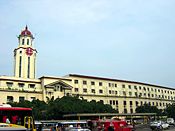


General landmarks
- Apolinario Mabini Shrine
- Chinatown (Binondo district)
- Embassy of the United States of America
- Ermita and Malate Districts, a place for Bohemian night life
- Fort Santiago
- Intramuros, the walled city built by the Spaniards, originally considered to be the City of Manila
- Malacañang Palace, the official residence of the President of the Philippines
- Manila Baywalk
- Malate Church
- Manila Boardwalk
- Manila Cathedral
- Manila City Hall
- Manila Ocean Park
- Manila Yacht Club
- Manila Zoological and Botanical Garden (Manila Zoo)
- Metropolitan Theater
- Museo Pambata
- National Library of the Philippines
- National Museum of the Philippines
- Paco Park, the location of the TV show Paco Park Presents
- Plaza Lorenzo Ruiz
- Plaza Miranda
- Quiapo Church
- Quirino Grandstand
- Plaza Rajah Sulayman
- Remedios Circle
- Rizal Park, also known as Luneta
- San Agustin Church
- San Sebastian Church
- The Manila Hotel
- The Supreme Court of the Philippines
- Victims of Martial Law Memorial Wall - Bonifacio Shrine (near City Hall)
- University of Santo Tomas
Cemeteries
- Manila Chinese Cemetery
- La Loma Cemetery
- Manila North Cemetery
- Manila South Cemetery
- Paco Park
Hotels
Manila offers a wide range of accommodations ranging from top-rated deluxe hotels to more affordable universal lodges. Most of these accommodations are located within Roxas Boulevard overlooking Manila Bay, or in the districts of Ermita and Malate.
Museums
- Bahay Tsinoy
- Intramuros Light and Sound Museum
- Main National Museum, Padre Burgos Street
- Museo ng Maynila (Museum of Manila), formerly the Pre-War Army-Navy Club Bldg., Rizal Park
- Museo Pambata (Children's Museum), formerly the Pre-War Elk's Club Bldg., Rizal Park
- National Museum of the Filipino People, Rizal Park
- Parish of the Our Lady of the Abandoned - Sta. Ana (pre-Spanish artifacts)
- Plaza San Luis, Intramuros
- San Agustin Church Museum, Intramuros
- The Museum - De La Salle University-Manila, Taft Avenue, Malate
- UST Museum of Arts and Sciences
Sporting venues
- Rizal Memorial Sports Complex, Vito Cruz Street, Malate
- Rizal Memorial Coliseum
- Rizal Memorial Track and Football Stadium
- Rizal Memorial Baseball Stadium
- Ninoy Aquino Stadium
- San Andres Gym (formerly the Mail and More Arena, the home of the defunct Manila Metrostars)
Sister cities
 Guangzhou, China
Guangzhou, China Shanghai, China
Shanghai, China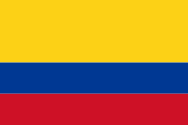 Cartagena, Colombia
Cartagena, Colombia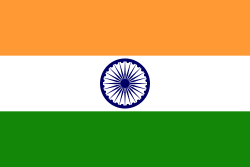 New Delhi, India
New Delhi, India Haifa, Israel
Haifa, Israel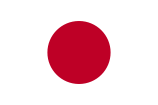 Osaka, Japan
Osaka, Japan Yokohama, Japan
Yokohama, Japan Panama City, Panama
Panama City, Panama Busan, South Korea
Busan, South Korea Incheon, South Korea
Incheon, South Korea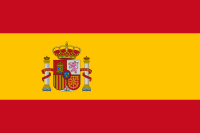 Madrid, Spain
Madrid, Spain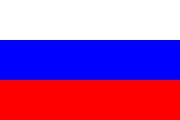 Moscow, Russia
Moscow, Russia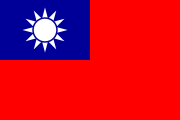 Taipei, Taiwan[26]
Taipei, Taiwan[26]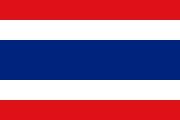 Bangkok, Thailand
Bangkok, Thailand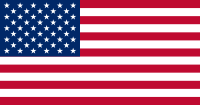 Santa Barbara, California, USA [27]
Santa Barbara, California, USA [27] Sacramento, California, USA
Sacramento, California, USA San Francisco, California, USA
San Francisco, California, USA Maui County, Hawaii, USA
Maui County, Hawaii, USA Los Angeles, California, USA
Los Angeles, California, USA Ho Chi Minh City, Vietnam
Ho Chi Minh City, Vietnam
See also
- Imperial Manila, a political epithet to describe Manila's role in national affairs.
- Mega Manila, a larger, albeit geographical area of Metro Manila and nearby provinces.
- 1968 Casiguran earthquake, an earthquake the caused damage in Manila's Binondo district.
- List of metropolitan areas by population
- Megacity
References
- ↑ 1.0 1.1 50 Largest World Metropolitan Areas Ranked: 2000 Estimates
- ↑ 2.0 2.1 2.2 2.3 Wow Philippines: Manila-Cosmopolitan City of the Philippines. Accessed September 08, 2008.
- ↑ E.M. Pospelov, Geograficheskie nazvanie mira (Moscow 1998).
- ↑ Ambeth Ocampo (June 25, 2008), Looking Back: Pre-Spanish Manila, Philippine Daily Inquirer, http://services.inquirer.net/print/print.php?article_id=20080625-144587, retrieved on 2008-09-09
- ↑ GaWC Research Bulletin 5
- ↑ Filipiniana: Act of Taking Possession of Luzon by Martin de Goiti. Accessed September 06, 2008.
- ↑ 7.0 7.1 Blair 1911, pp. 173-174
- ↑ 8.0 8.1 History of Manila. Accessed September 08, 2008.
- ↑ 9.0 9.1 Tracy 1995, p. 54
- ↑ Tracy 1995, p. 58
- ↑ Fish 2003, p. 134
- ↑ Fish 2003, p. 158
- ↑ Battle of Manila Bay, 1 May 1898. Accessed September 08, 2008.
- ↑ Admiral Dewey Testifies. Accessed September 05, 2008.
- ↑ Boot"2002, p. 125, "As many as 200,000 civilians also died, victims of disease and famine and the cruelties of both sides.";
^ Kumar 2000, "In the fifteen years that followed the defeat of the Spanish in Manila Bay in 1898, more Filipinos were killed by U.S. forces than by the Spanish in 300 years of colonization. Over 1.5 million died out of a total population of 6 million.";
^ Painter 1989, p. 154, "Hundreds of thousands of Filipinos died in battle, of disease, or of other war-related causes.";
^ Bayor 2004, p. 335, "Some seven thousand Americans and twenty thousand Filipinos were killed or wounded in the war, and hundreds of thousands of Filipinos – some estimates are as high as 1 million – died of war-related disease or famine.";
^ Guillermo, Emil (February 8, 2004), "A first taste of empire", Milwaukee Journal Sentinel: 03J "The Philippines: 20,000 military dead; 200,000 civilian dead. Some historians, however, put the toll higher – closer to 1 million Filipinos because of the disease and starvation that ensued.", ([The Philippines: 20,000 military dead; 200,000 civilian dead. (paid archive search);
^ The Editors (November 1, 2003), "Kipling, the 'White Man's Burden,' and U.S. Imperialism", Monthly Review 55 (6): 1, http://www.monthlyreview.org/1103editors.htm, "Although a quarter of the million is the “consensual” figure of historians, estimates of Filipino deaths from the war have ranged as high as one million, which would have meant depopulation of the islands by around one-sixth.". - ↑ "Philippines, The", The Columbia Encyclopedia, Sixth Edition. 2001-07, bartleby.com, http://www.bartleby.com/65/ph/PhilipRep.html.
- ↑ Philippine History, Pinas, De La Salle University, http://pinas.dlsu.edu.ph/history/history.html
- ↑ 18.0 18.1 18.2 18.3 MSN Encarta: Manila. Accessed September 06, 2008.
- ↑ Atienza willing to work with Lim despite Baywalk row - INQUIRER.net, Philippine News for Filipinos
- ↑ Manila City Government website. Accessed September 06, 2008.
- ↑ World Urban Areas: Population & Density, emographia.com, August 2008, p. 80, http://demographia.com/db-worldua.pdf
- ↑ Free hospital, health aid in Manila assured. Accessed September 09, 2008.
- ↑ Manila-Montreal Sister City Agreement Holds Potential for Better Cooperation : Philippines : Gov.Ph : News
- ↑ Sister Cities, New Winnipeg, http://web.archive.org/web/20051228134139/http://newwinnipeg.com/news/info/sister-cities.htm, retrieved on 2008-09-09 (archived from the original on 2005-12-28)
- ↑ Allison Lopez (August 7, 2008), Manila mayor flies to ‘sister city’ for Beijing Olympics, Philippine Daily Inquirer, http://sports.inquirer.net/breakingnews/breakingnews/view/20080807-153276/Manila-mayor-flies-to-sister-city-for-Beijing-Olympics, retrieved on 2008-09-09
- ↑ The 45 Sister Cities of taipei, taipei.gov, http://www.protocol.taipei.gov.tw/sister/esister.htm, retrieved on 2008-09-09
- ↑ Sister Cities, the City of Santa Barbara, California, November 17, 2006, http://www.santabarbaraca.gov/Government/Boards_and_Commissions_N-Z/Sister_Cities_Board/, retrieved on 2008-09-09
Bibliography
- Bayor, Ronald H (June 23, 2004), The Columbia Documentary History of Race and Ethnicity in America, Columbia University Press, ISBN 0-231-11994-1, http://books.google.com/books?id=o2eWvyig9SgC.
- Blair, Emma Helen, ed. (1911), The Philippine Islands, 1493-1803, http://quod.lib.umich.edu/cgi/t/text/pageviewer-idx?c=philamer&cc=philamer&idno=afk2830.0001.003&q1=blair&frm=frameset&view=image&seq=5, (Vol. 1, no. 3).
- Boot, Max (April 1, 2002), The Savage Wars of Peace: Small Wars and the Rise of American Power, Basic Books, ISBN 0-465-00720-1, http://books.google.com/books?id=0lIg-lGwqBoC.
- Fish, Shirley (2003), When Britain Ruled the Philippines 1762-1764, ISBN 1-4107-1069-6, http://books.google.com/books?id=RdIEAAAACAAJ.
- Kumar, Amitava (October 29, 1999), Poetics/Politics: Radical Aesthetics for the Classroom, Palgrave, ISBN 0-312-21866-4, http://books.google.com/books?id=AJfkKgAACAAJ.
- Painter, Nell Irvin (May 1, 1989), Standing at Armageddon: The United States, 1877–1919, W. W. Norton & Company, ISBN 0-393-30588-0, http://books.google.com/books?id=5_gB8ABKAx0C.
External links
- Official Website of the City of Manila
- Manila travel guide from Wikitravel
|
|||||
|
|||||||||||||||
|
|||||||||||
|
|||||||||||||||||


